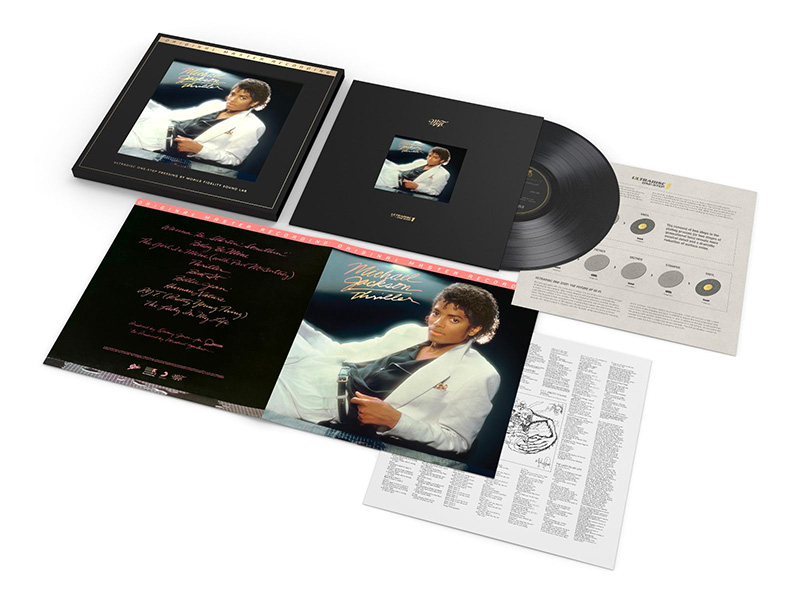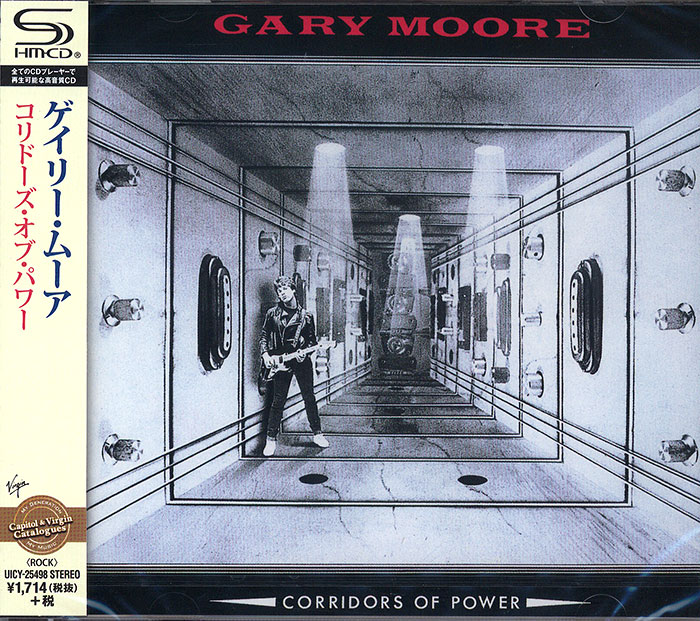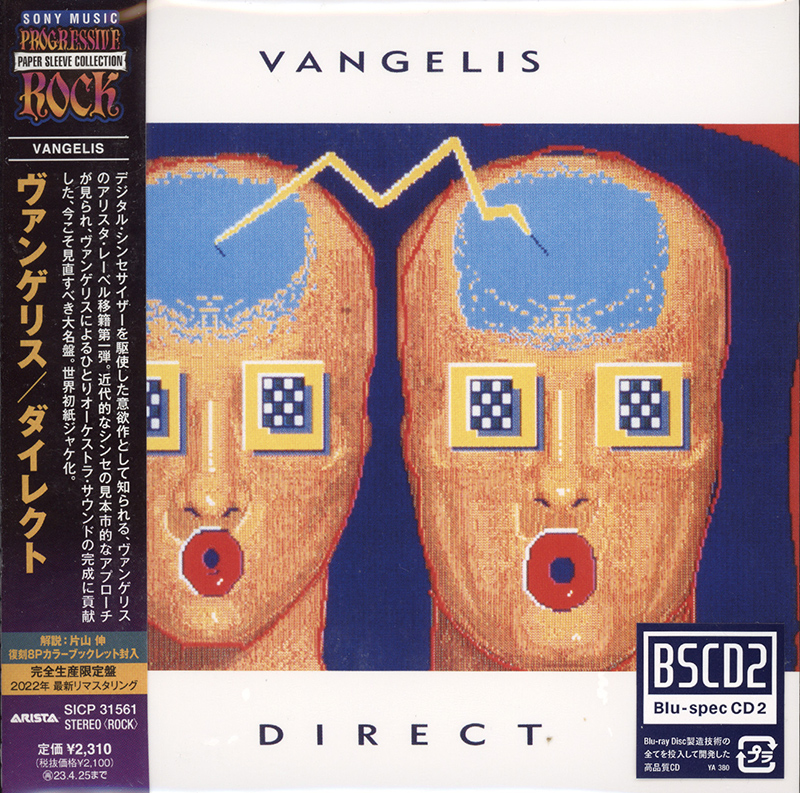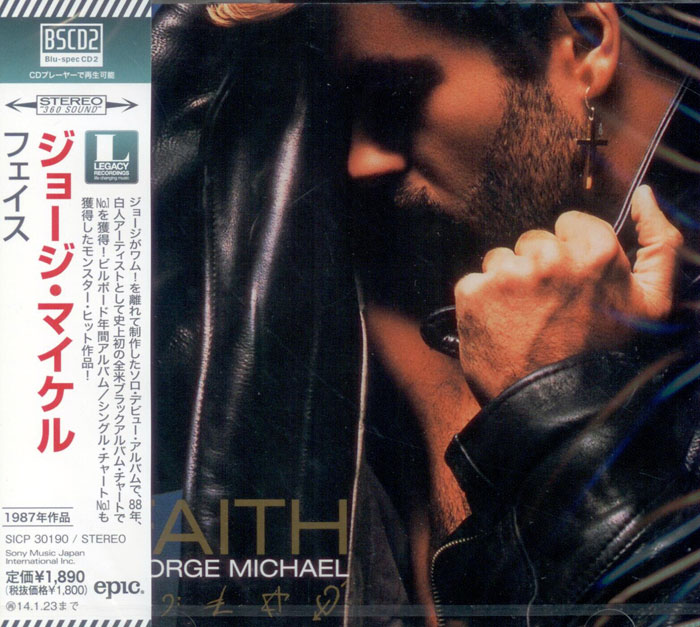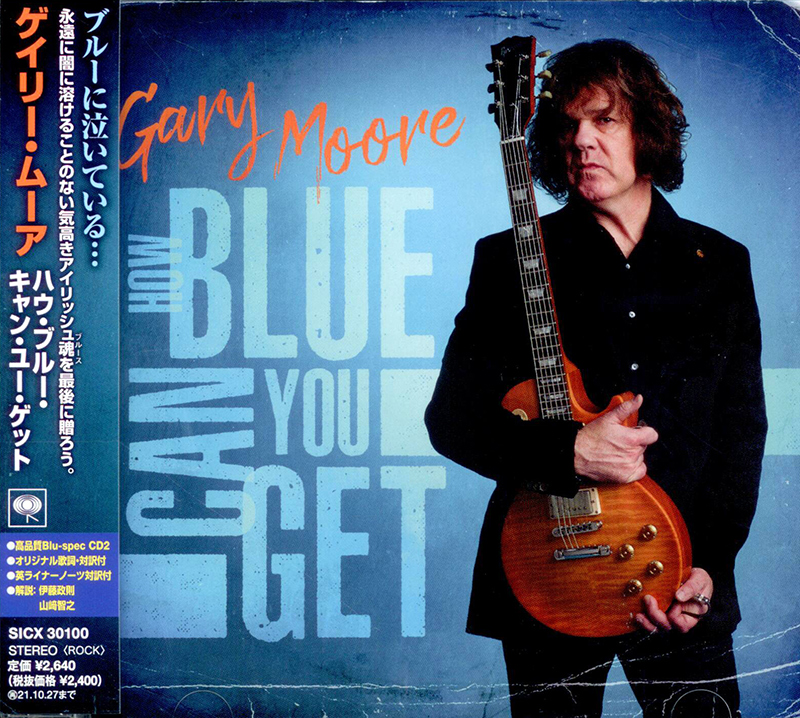Logowanie
Mikołaj - ten to ma gest!
Elton John, The Mamas & The Papas, Cat Stevens, Rod Stewart, Bobbie Gentry, Stevie Wonder, Engelbert Humperdinck
Memory Lane
Edycja Numerowana - 1000 egzemplarzy w skali światowej
RACHMANINOV, Eiji Oue, Minnesota Orchestra
Symphonic Dances / Vocalise
Best Recordings of 2001!!! NAJCZĘŚCIEJ KUPOWANA PŁYTA Z RR!
Karnawał czas zacząć!
Music of Love - Hi-Fi Latin Rhythms
Samba : Music of Celebration
AUDIOPHILE 24BIT RECORDING AND MASTERING
CHOPIN, LISZT, DEBUSSY, DVORAK, Gerhard Oppitz
Dances romantiques - A fantastic Notturno
Wzorcowa jakość audiofilska z Clearaudio
Winylowy niezbędnik
ClearAudio
Double Matrix Professional - Sonic
najbardziej inteligentna i skuteczna pralka do płyt winylowych wszelkiego typu - całkowicie automatyczna
Michael Jackson
Thriller
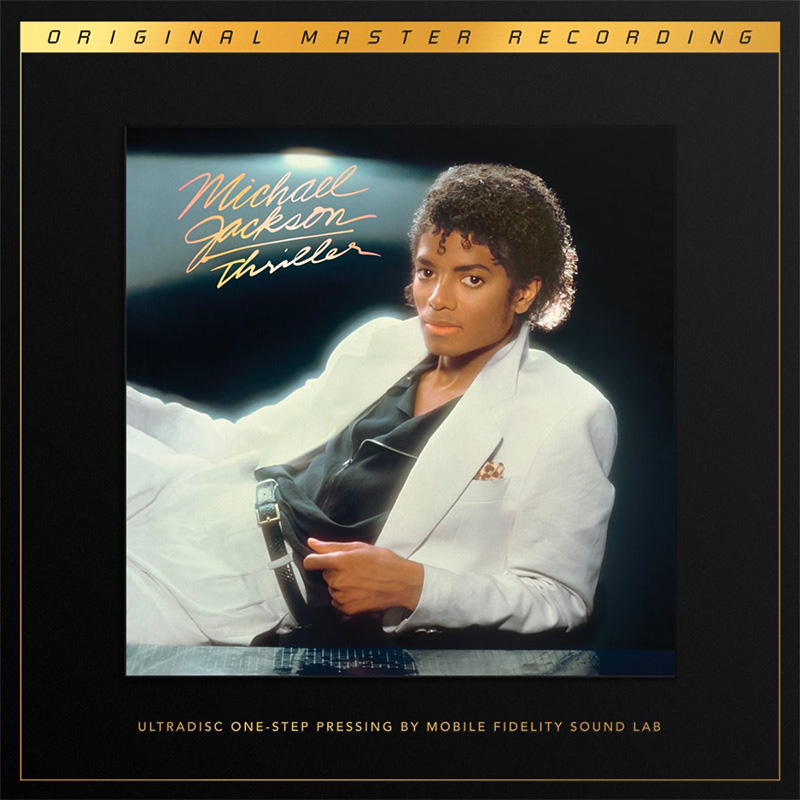
ULTRADISC ONE STEP LP - Edycja Limitowana, numerowana
The Best-Selling Album of All Time Celebrates Its 40th Anniversary: Michael Jackson's Thriller Receives Definitive Treatment on Mobile Fidelity's UltraDisc One-Step 180g 33RPM LP Set
Mastered from the 1/2" / 30 IPS Analog Master to DSD 256 to Analog Console to Lathe for Superior Sound and Strictly Limited to 40,000 Numbered Copies: Experience the Transformative Songs, Soulful Vocals, Sleek Rhythms, and Vibrant Production as If Hearing It All for the First Time
34-Times-Platinum Blockbuster Changed Music, Culture, Entertainment, and Society: Includes "Beat It", "Billie Jean", "Thriller", "Wanna Be Startin' Somethin'", "Human Nature", "P. Y. T. (Pretty Young Thing)", and "The Girl Is Mine" (with Paul McCartney)
Rolling Stone 500 Greatest Albums of All Time - Rated 12/500!
Michael Fremer Rated 8/11 Music, 8/11 Sonics!
Putting into perspective the incalculable impact and pioneering significance of the best-selling album of all time - Michael Jackson's Thriller - has never been easy. Though Thriller lays claim to mind-boggling statistics that serve as reminders of how pervasive and indispensable it remains to music snobs and casual listeners alike, its essence always traces back to the greatness, power, and scope of the music. Now, as it celebrates its 40th anniversary, the record that reimagined pop; united audiences; made strides towards achieving racial equality; established the video as an artistic and commercial format; and taught the world how to dance sounds even more invigorating than it did during the advent of the Walkman.
Mastered from the 1/2" / 30 IPS analog master to DSD 256, pressed at RTI, and limited to 40,000 numbered copies, Mobile Fidelity's UltraDisc One-Step 180g 33RPM LP set does for Thriller what Jackson's unforgettable appearance on the "Motown 25" TV special in 1983 did for his career: It makes the music personal, human, desirable, relatable, imaginative - the definition of cool. This extraordinary reissue does so by presenting the songs in lifelike fashion, zeroing in on the fundamentals with laser focus, and magnifying the brilliance of the production, arrangements, and vocals in ways that let everyone experience Thriller as if hearing the album for the first time.
Surpassing the sonics of earlier reissues and pressings, Mobile Fidelity's 180g LP set strips away prior limitations and provides a clear, dynamic view of a landmark that crashed through every conceivable barrier and permanently transformed music, culture, and society. The expanse and depth of the soundstage, range of detail, percussive textures, air around the vocals, and natural decay of notes come through with demonstration-grade realism.
The gorgeous packaging of the Thriller UD1S pressing befits the album's select status. Housed in an open-ended slipcase, the set features a special foil-stamped jacket and faithful-to-the-original graphics that illuminate the splendor of the recording. Aurally and visually, this reissue exists as a curatorial artifact meant to be preserved and examined. It is made for discerning listeners that prize sound quality and production, and who desire to fully immerse themselves in everything involved with the album.
Given that no album released during the past four decades even approaches the magnitude of Thriller, everything about it remains important. Numbers - even the "40" tied to its anniversary - don't even tell half the story. The 1982 blockbuster has sold more than 34 million copies in the U.S.; globally, it has moved upwards of 70 million units. Thriller dominated the 1984 Grammy Awards, winning a record-breaking eight trophies and sweeping every major category. It repeated the feat at the American Music Awards. Seven of its nine songs were released as singles; each charted in the Top 10. Perhaps most astonishingly, Thriller topped the Top 200 Albums chart for 37 weeks during a 59-week stretch. Fast forward 24 years, and the album was the biggest-selling catalog title of 2008.
The record's unimpeachable accolades and archival standing help provide another frame of reference. Acclaimed upon arrival, Thriller topped The Village Voice's comprehensive Pazz & Jop poll in 1983. Included in both the Library of Congress' National Recording Registry and the Grammy Hall of Fame, Thriller was ranked by the Rock and Roll Hall of Fame at No. 3 on its Definitive 200 Albums of All Time. Rolling Stone named it the 12th Greatest Album of All Time. TIME deemed it "the greatest pop album of all time." The Independent called it "the most inspiring album of all time."
Thriller proved as influential as it did inspiring. Its unparalleled success, dazzling style, and sleek architecture changed every facet of culture and entertainment. The reverberations echoed throughout society. Thriller crossed over to mainstream channels and white audiences with a degree that no Black musician managed in decades (if ever); prompted MTV to give Black artists a widespread platform; elevated choreography and dance to higher-level artforms; shattered long-standing racial boundaries; and reconceptualized music via a genre- and color-blind blend of fleet pop, funk, disco, soul, and rock sent up with cinematic panache, oversized ambition, and dynamic energy.
Its effect on multitudes of subsequent artists cannot be overstated. Thriller opened up a new galaxy in which Prince soon strolled. It's the same universe that Usher, Maxwell, and Jamiroquai joined in the '90s and that contemporary headliners like Beyonce, Maxwell, Justin Timberlake, and Bruno Mars orbit today. Their style-blurring identities, R&B-rooted foundations, and interdisciplinary approaches directly link to those on Thriller. Notably, the album's first single - "The Girl Is Mine", a duet and co-write with Beatles legend Paul McCartney - captured the record's unwillingness to cater to a specific race, generation, class, or style. Eddie Van Halen - at the time, the world's premier rock guitarist - performed a similar bridge role by supplying the electrifying solo on "Beat It".
Jackson, Quincy Jones, and company do the rest. Cue up any track on Thriller and the insatiable desire to move takes hold. So do sensations of familiarity, pleasure, fun, and soulfulness. Be it the breathless, bass-laden swagger of the Moonwalking "Billie Jean"; horn-accented, post-disco slide of the gossip critique "Wanna Be Startin' Somethin'"; rousing tempo of the lush, sequin-adorned "P. Y. T. (Pretty Young Thing)"; gentle balladry and liquid vocal phrasing of "Human Nature"; vivid hybrid of funk-disco and horror-film drama of the title track; or streetwise strut and rhythmic fantasia of "Beat It", Thriller never lets up.
"It's close to midnight..."
More About Mobile Fidelity UltraDisc One-Step and Why It Is Superior
Mobile Fidelity Sound Lab's UltraDisc One-Step (UD1S) technique bypasses generational losses inherent to the traditional three-step plating process by removing two steps: the production of father and mother plates, which are created to yield numerous stampers from each lacquer that is cut. For UD1S plating, stampers (also called "converts") are made directly from the lacquers. Since each lacquer yields only one stamper, multiple lacquers need to be cut. Mobile Fidelity's UD1S process produces a final LP with the lowest-possible noise floor. The removal of two steps of the plating process also reveals musical details and dynamics that would otherwise be lost due to the standard multi-step process. With UD1S, every aspect of vinyl production is optimized to produce the best-sounding vinyl album available today.
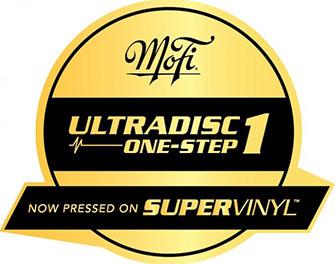 Jak wyjaśnić istotę nowego zjawiska na naszym rynku audiofilskim, prosto z Mobile Fidelity, gdzie zaczęto produkcję winyli One-Step-LP?
To proste. Oczywiście, wszystko Państwu powiem. Wiem, o co chodzi.
Dziś wytwarzanie winyli odbywa się tak, jak gdybyśmy trzymaną w lewej dłoni kromkę chleba posmarowali masłem, przyłożyli do niej trzymaną właśnie w dłoni prawej drugą kromkę w celu przeniesienia na nią masła. Ok. Mamy więc w prawej ręce pajdowy stempel, wykonany ze wzorca sznitki-matki. Teraz z tego stempla (prawa dłoń) odciskamy masło na skibkę do konsumpcji… No właśnie, podziwiam Pańską spostrzegawczość, przydałaby się jeszcze jedna ręka… I powtarzamy tę czynność razy trzy, osiemnaście, siedemdziesiąt, dwa tysiące. Tyle płyt ile chcemy mieć w danym nakładzie.
Mam nadzieję, że nie pominąłem tu żadnego etapu tworzenia glonków.
Tak właśnie produkuje się płyty LP.
Z taśmy matki robimy na ‘lakierze’ (aluminiowy talerz z twardym tworzywem zwanym często po polskiemu – lakierem) rowkową kopię nagrania muzycznego.
Ten lacquer disc pokrywamy azotanem srebra. Całość wędruje do komory galwanizacyjnej. Podążamy? Z komory wyłania się tzw. niklowy negatyw. W fachowej terminologii – ojciec-master (metal master). Jest on negatywem struktury rowków płyty winylowej. Tworzymy więc z niego metalowy pozytyw tychże rowków, określany terminem matka-master (metal mother). I dzieło stworzenia zakończone. Matka-master, na wzór biblijnej Ewy, odciska się na setkach, tysiącach winylowych kopii. Ów stamper, jak mówi się w branży o matce – jest właściwie echem wyrytego zapisu z taśmy magnetofonowej. No ale matka nieustannie się zużywa. W efekcie – każda kolejna kopia z matki jest mniej podobna do pierworodnego winylo-dziecięcia.
One-Step-LP zrywa z teorią Darwina, przeczy logice prokreacji, zadaje w jakimś sensie kłam niektórym aspektom genderowym. Bo oto ta technologia eliminuje matkę. To znaczy… ojca. OK. W miejsce obu – pojawia się On. One-Step-LP.
Nacięty ‘lakier’ zamienia się od razu w stempel do odciskania krążków dla Państwa.
Maksymalnie 500 z jednego ‘lakieru’. I znów robi się lakier, i znów 500 plus odciśnięć, które muszą być zweryfikowane, porównane z taśmą źródłową. Może się więc zdarzyć, że płyta z partii 3500-4000 będzie się brzmieniowo różniła od krążka z numerem 1000-1500.
Ponadto – masa winylowa tych One-Step-LP nie zawiera barwnika węglowego.
Szaleństwo! Ceny pierwszych wydań w tej technologii osiągają zawrotne ceny na audiofilskich giełdach.
Do reedycji wybrano najlepsze mastery. Nagrania o utwierdzonej audiofilskiej reputacji.
Czyli – prawie taśma.
Oto kolejny, wielki krok audiofilskiej społeczności, która nie zawaha się wydać każde pieniądze, byle tylko zbliżyć się do oryginału.
A przecież można byłoby po tenże oryginał sięgnąć. Na taśmie.
No, ale to nie byłby już chyba audiofilzm. Tylko czyta logika i pragmatyka,
A ta nikogo nie ekscytuje.
Jak wyjaśnić istotę nowego zjawiska na naszym rynku audiofilskim, prosto z Mobile Fidelity, gdzie zaczęto produkcję winyli One-Step-LP?
To proste. Oczywiście, wszystko Państwu powiem. Wiem, o co chodzi.
Dziś wytwarzanie winyli odbywa się tak, jak gdybyśmy trzymaną w lewej dłoni kromkę chleba posmarowali masłem, przyłożyli do niej trzymaną właśnie w dłoni prawej drugą kromkę w celu przeniesienia na nią masła. Ok. Mamy więc w prawej ręce pajdowy stempel, wykonany ze wzorca sznitki-matki. Teraz z tego stempla (prawa dłoń) odciskamy masło na skibkę do konsumpcji… No właśnie, podziwiam Pańską spostrzegawczość, przydałaby się jeszcze jedna ręka… I powtarzamy tę czynność razy trzy, osiemnaście, siedemdziesiąt, dwa tysiące. Tyle płyt ile chcemy mieć w danym nakładzie.
Mam nadzieję, że nie pominąłem tu żadnego etapu tworzenia glonków.
Tak właśnie produkuje się płyty LP.
Z taśmy matki robimy na ‘lakierze’ (aluminiowy talerz z twardym tworzywem zwanym często po polskiemu – lakierem) rowkową kopię nagrania muzycznego.
Ten lacquer disc pokrywamy azotanem srebra. Całość wędruje do komory galwanizacyjnej. Podążamy? Z komory wyłania się tzw. niklowy negatyw. W fachowej terminologii – ojciec-master (metal master). Jest on negatywem struktury rowków płyty winylowej. Tworzymy więc z niego metalowy pozytyw tychże rowków, określany terminem matka-master (metal mother). I dzieło stworzenia zakończone. Matka-master, na wzór biblijnej Ewy, odciska się na setkach, tysiącach winylowych kopii. Ów stamper, jak mówi się w branży o matce – jest właściwie echem wyrytego zapisu z taśmy magnetofonowej. No ale matka nieustannie się zużywa. W efekcie – każda kolejna kopia z matki jest mniej podobna do pierworodnego winylo-dziecięcia.
One-Step-LP zrywa z teorią Darwina, przeczy logice prokreacji, zadaje w jakimś sensie kłam niektórym aspektom genderowym. Bo oto ta technologia eliminuje matkę. To znaczy… ojca. OK. W miejsce obu – pojawia się On. One-Step-LP.
Nacięty ‘lakier’ zamienia się od razu w stempel do odciskania krążków dla Państwa.
Maksymalnie 500 z jednego ‘lakieru’. I znów robi się lakier, i znów 500 plus odciśnięć, które muszą być zweryfikowane, porównane z taśmą źródłową. Może się więc zdarzyć, że płyta z partii 3500-4000 będzie się brzmieniowo różniła od krążka z numerem 1000-1500.
Ponadto – masa winylowa tych One-Step-LP nie zawiera barwnika węglowego.
Szaleństwo! Ceny pierwszych wydań w tej technologii osiągają zawrotne ceny na audiofilskich giełdach.
Do reedycji wybrano najlepsze mastery. Nagrania o utwierdzonej audiofilskiej reputacji.
Czyli – prawie taśma.
Oto kolejny, wielki krok audiofilskiej społeczności, która nie zawaha się wydać każde pieniądze, byle tylko zbliżyć się do oryginału.
A przecież można byłoby po tenże oryginał sięgnąć. Na taśmie.
No, ale to nie byłby już chyba audiofilzm. Tylko czyta logika i pragmatyka,
A ta nikogo nie ekscytuje.





























